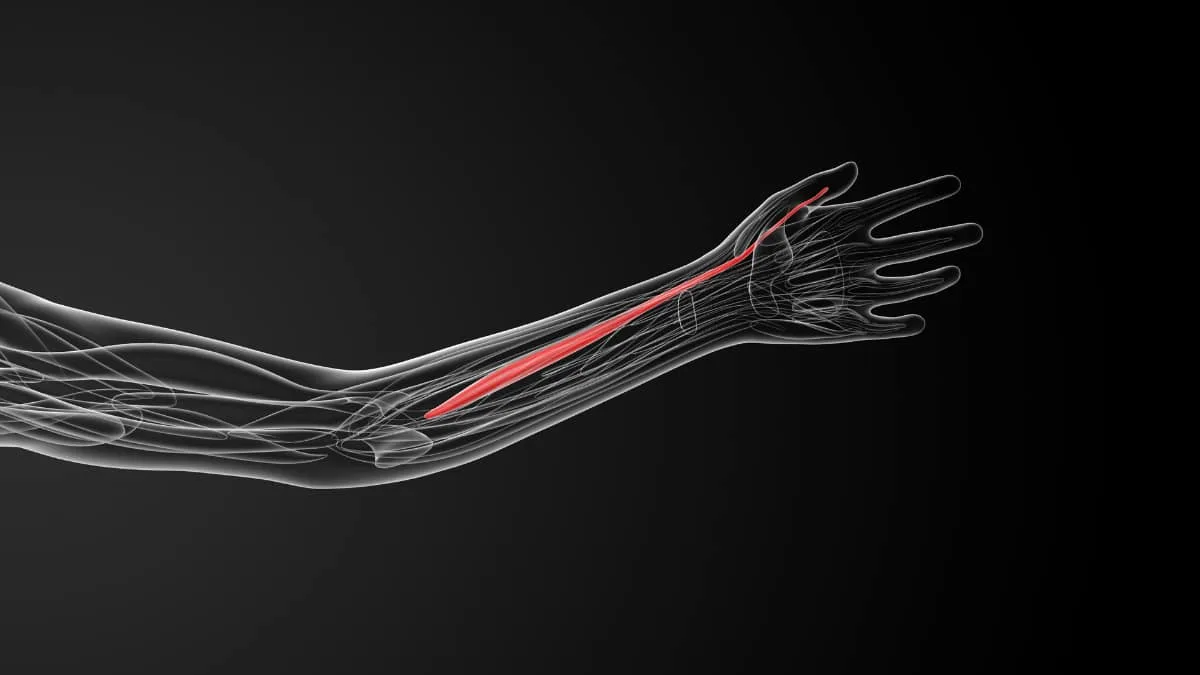Out of the countless forearm muscles in the human body, the flexor pollicis longus is perhaps the most interesting. And that’s because it’s responsible for flexion of the thumb.
If you don’t realize how important this anatomical function is, then let me put it to you like this: If you weren’t adept at thumb flexion, then you wouldn’t be able to hold the smartphone or computer mouse that you most likely have in your hand right now.
Related flexor stretches/exercises
- Flexor carpi radialis stretch
- Flexor carpi ulnaris strengthening exercises
- Flexor digitorum profundus exercises
- Flexor digitorum superficialis stretch
Flexor pollicis longus anatomy
The flexor pollicis longus is one of 4 deep flexors of the forearm, meaning that it’s not as close to the skin as the superficial flexors. Like many muscles of the lower arm, and as its name suggests, the flexor pollicis longus is a long muscle that originates from the radius and inserts into the thumb.
As its name also suggests, the flexor pollicis longus is a potent flexor of the thumb, [1] making it particularly important for gripping objects and functioning in everyday life. It also contributes to wrist flexion, but to a lesser degree.
Flexor pollicis longus exercises
Since the flexor pollicis longus is unique in that it flexes the thumb, [2] we’re going to be focusing on thumb-specific exercises and stretches in this workout routine. However, we don’t want to neglect wrist flexion, either, as this is one of the main functions of all of the forearm flexors.
1. Thumb flexion
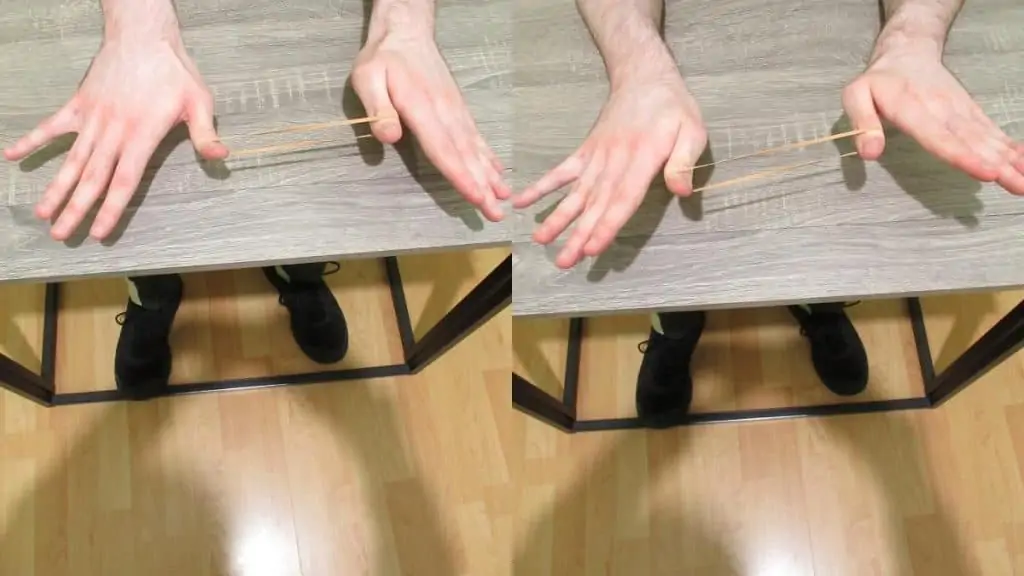
There aren’t many exercises that you can do with just a rubber band, but this is one of them. And while you could technically do this drill while laid in bed or slumped on the sofa, I recommend doing it while sat upright in a chair so that you don’t encourage bad posture.
- Raise your hand out in front of you as if you’re getting ready to wave at a friend.
- Hold a rubber band in your other hand.
- Hook the thumb of your waving hand around the band and then pull on the band with your other hand to create some tension.
- Move your thumb towards your little finger. This is thumb flexion in action.
- Repeat for 2-3 sets of 10 reps, and don’t forget your other thumb.
2. Flexor pollicis longus stretch
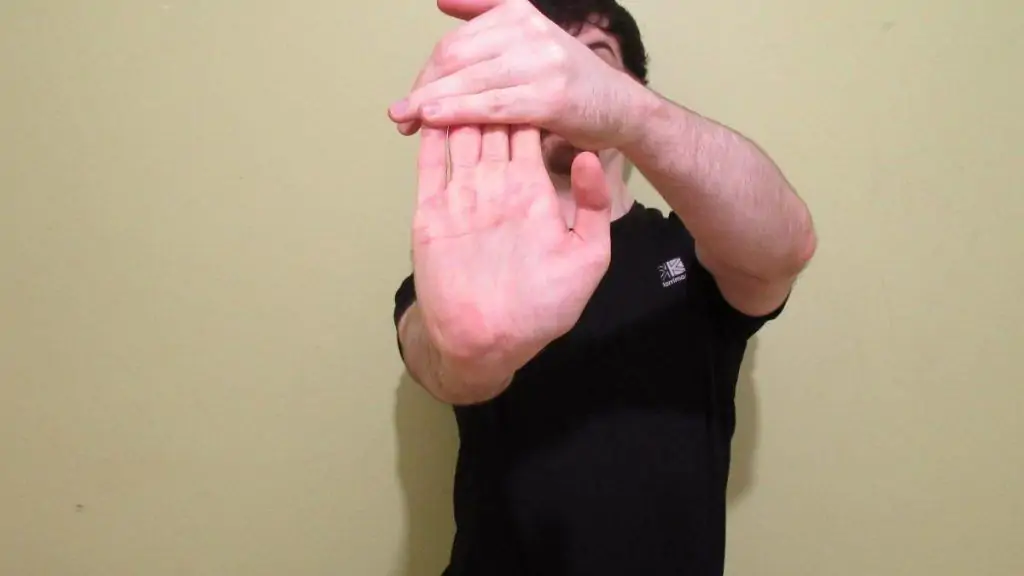
While the above exercise works on strength, this exercise relieves tightness and improves your flexibility. This time, however, you don’t even need a rubber band.
- Like before, raise your hand up as if you’re excitedly waving at a friend (or reluctantly waving at your boss).
- Place the finger of your other hand around the thumb of your waving hand.
- Push the thumb of your waving hand back with those fingers until you feel a stretch.
- Hold this position for 10-20 seconds and repeat with your other thumb.
3. Simple wrist curl
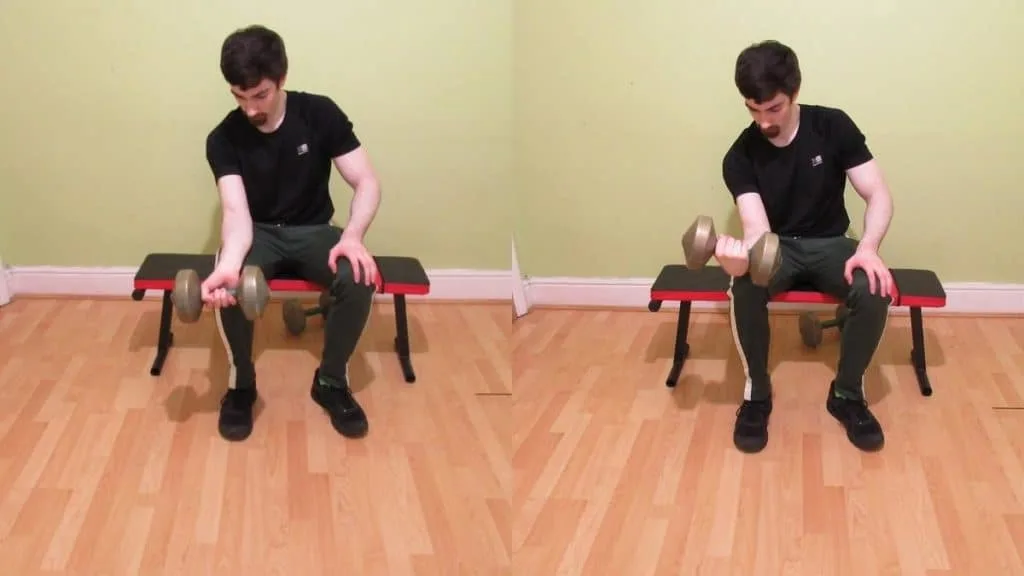
This flexor pollicis longus exercise is called the “simple” wrist curl because you don’t need to go to the gym to do it. And while I’m still going to recommend dumbbells since that’s what I’m most used to, you could also do this exercise with a shopping bag or anything else that has a handle and which can be loaded for resistance.
- Take your dumbbell and place your forearm on a flat surface (palms up).
- Bend your wrist and slowly lower the dumbbell to the floor until you feel a nice stretch.
- Come back up by curling your hand towards your body.
- Squeeze your forearm momentarily and repeat for 2-3 sets of 10-12 reps per arm.
Related posts
- Anconeus stretch
- Brachioradialis muscle exercises
- Palmaris longus stretch
- Pronator quadratus stretches
- Pronator teres workout
Should you train the flexor pollicis longus directly?
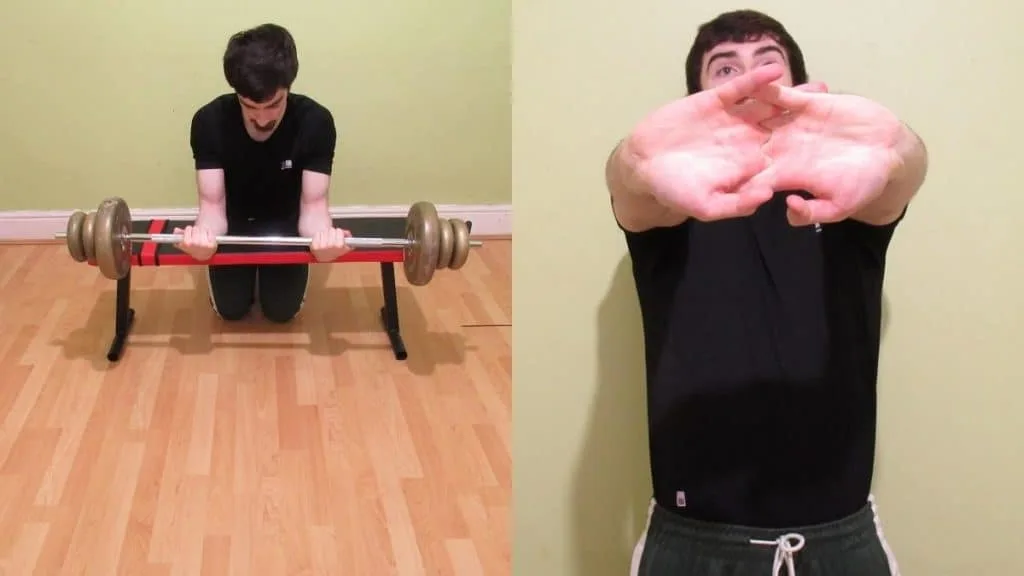
If we did isolation exercises for every little muscle group—even just for those in the forearm—then we’d quite literally be living in the gym.
The good news for us is that we don’t need to perform special forearm or wrist drills because regular strength training already works those muscles quite well.
That said, if you’re having problems with a particular area of your forearm, then I’m a big proponent of stretching that muscle to relieve some of the tension.
As for the flexor pollicis longus, if it’s a weak spot for you, then yes, I think that doing the first two thumb exercises is a great idea. The flexor pollicis longus stretch, in particular, is helpful for relieving tension in your thumbs, which can easily build up if you spend a lot of time on your phone.
Still, there’s no need to do an entire “thumb day” at the gym because whenever you grip anything, especially heavy weights, you’re giving your thumb flexors plenty of work.
Don’t forget those extensors!
- Extensor carpi radialis brevis workout
- Extensor carpi radialis longus stretch
- Extensor carpi ulnaris exercise
- Extensor digitorum stretch
- Extensor pollicis brevis stretches
In conclusion
Like many things in life, most of us tend to take our thumbs for granted. But when you think about it, they really are one of the most crucial body parts because without them, well, we wouldn’t have terrible stock photos of people giving us a cheesy thumbs up!
But, more importantly, the thumbs are integral for maintaining a strong grip. So if you are experiencing weakness in your thumbs and your physical therapist recommends exercising them, then give the flexor pollicis longus stretch and band exercise a try.
Thanks for reading.
References
- Pirie, E. (2020, October 29). Flexor pollicis longus muscle. Kenhub. https://www.kenhub.com/en/library/anatomy/flexor-pollicis-longus-muscle
- Benson, D. C., Miao, K. H., & Varacallo, M. (n.d.). Anatomy, Shoulder and Upper Limb, Hand Flexor Pollicis Longus Muscle. The National Center for Biotechnology Information. https://www.ncbi.nlm.nih.gov/books/NBK538490/

